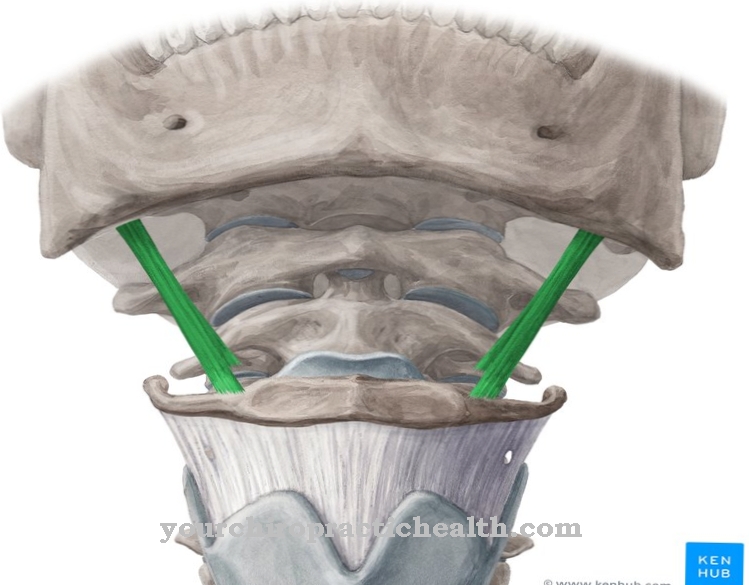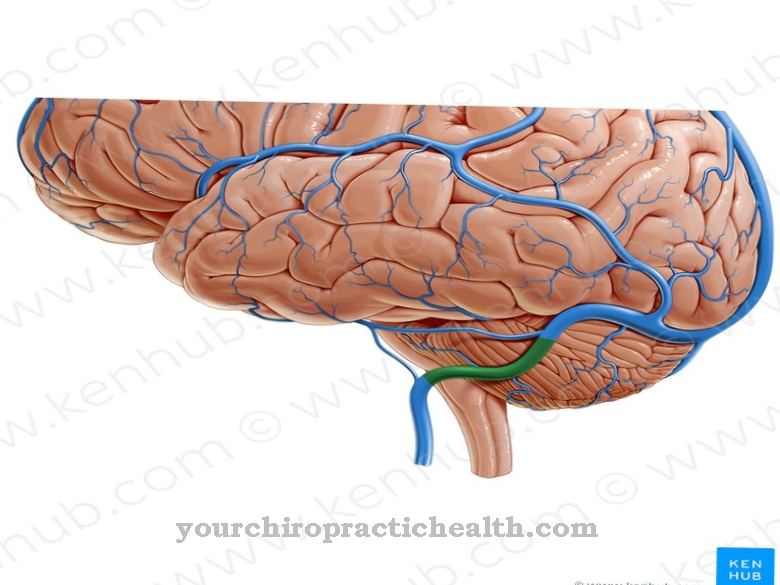Nephrons are the smallest morphological and functional units of the kidney. They consist of a kidney corpuscle and the kidney tubules connected to it. The blood is filtered in the nephrons so that ultimately the urine is produced.
What is a nephron?
A nephron is a functional unit of the kidney. Each kidney contains about a million of these anatomical subunits. Each nephron consists of a kidney corpuscle, also called a Malphigi corpuscle, and a kidney tubule. This kidney tubule is also called a tubule. It connects directly to the kidney corpuscle. The kidney corpuscle in turn consists of a so-called glomerulum and a Bowman capsule. This encloses the glomerulum.
Anatomy & structure
The glomerulum is an arterial tangle of arteries about 0.2 mm in size. The glomeruli are located in the renal cortex and are supplied with blood via branches in the renal artery. The small vascular loops have a fenestrated endothelium, which means that they are lined on the inside with a thin fenestrated cell layer.
The glomeruli are surrounded by the so-called Bowman capsule. This consists of two leaves. The outer sheet encloses the entire kidney corpuscle. The inner sheet envelops the fenestrated endothelium of the glomeruli from the outside. There are also windows in the leaf of the Bowman capsule. This is important so that water and small blood components can escape through these windows and thus the urine can be filtered off. However, the windows are so small that in healthy glomeruli no red blood cells or proteins can fit through. This means that these components remain in the vessels and in the body's circulation.
At the so-called urinary pole, the outer sheet of Bowman's capsule merges into the tubule apparatus, i.e. the kidney tubule. The tubular apparatus begins with the proximal tubule. Like the glomeruli, this is still in the cortical region of the kidney. It is particularly twisted in its initial area. This part is followed by a straight section that goes down into the renal medulla.
After that, the canal narrows and forms an arch. This transition piece is called the Henle loop. This is followed by a wider and ascending part of the tubule, which pulls up again near the glomerulum. This part of the kidney tubule is called the distal tubule.
Function & tasks
The main function of the nephrons is to prepare urine. In order to be able to perceive the filter function, the kidneys are very well supplied with blood. Around 1700 liters of blood flow through the kidneys every day. After an initial filtering through the glomeruli, around 170 liters of primary urine are produced. After further recovery processes, 1.7 liters of urine remain. This is then excreted through the urinary tract.
Urination begins in the glomerulum. Here, a first filtrate is pressed out of the flowing blood through the endothelial window. Water and small molecules such as electrolytes can pass this so-called blood-urine barrier. Larger molecules such as proteins remain in the vascular system. This creates a protein-free ultrafiltrate, the primary urine. This primary urine now enters the tubular apparatus of the nephrons. For the most part, reabsorption takes place in the tubular system.
Water, salts or glucose are brought back into the vessels from the primary urine. Conversely, water, salts and, above all, urinary substances can also be secreted from the surrounding vessels into the kidney tubules. Which substances and how much water ultimately end up in the urinary tract is regulated by various systems in the body.
The filtered secondary urine then reaches the renal pelvis via the collecting tubes, which connect directly to the tubular apparatus. Ultimately, urine is excreted via the urinary tract.
Diseases
When the kidney's nephrons, or more precisely the glomeruli, are inflamed, it is called glomerulonephritis. Glomerulonephritis is an abacterial inflammation of the kidney cortex. Abacterial means that the disease is not caused by bacteria. Acute glomerulonephritis is usually based on an immunological reaction.
The disease usually occurs about two weeks after an acute infection with ß-haemolytic group A streptococci. The body formed antibodies against these bacteria during the infection. These bind to their opponents, the antigens. This creates antigen-antibody complexes (immune complexes). These attach to the wall of the glomeruli and cause inflammation there. The disease is only indirectly caused by bacteria.
At the beginning of the inflammation of the glomeruli there are no more bacteria in the blood. Typical infections that can lead to glomerulonephritis are tonsillitis, inflammation of the sinuses or the ears. Certain skin diseases such as erysipelas can also be the cause of glomerulonephritis. The disease manifests itself through symptoms such as blood in the urine, high blood pressure, pressure in the kidney area or edema of the eyelids. Acute glomerulonephritis can also develop into a chronic form. If left untreated, chronic glomerulonephritis can lead to kidney failure or even kidney failure.
The nephrotic syndrome is a complex of symptoms that can occur as a complication in all diseases of the glomeruli. Incorrect filter performance leads to the loss of proteins and red blood cells. One also speaks of a protein-losing kidney. The nephrotic syndrome is characterized by proteinuria (proteins in the urine), edema and hyperlipoproteinemia.
In hyperlipoproteinemia, more fat-protein compounds, so-called lipoproteins, are found in the blood. In addition to glomerulonephritis, diabetic glomerulosclerosis, intoxications, infections, plasmacytoma or collagenosis can also be the cause of the nephrotic syndrome.
















.jpg)
.jpg)



.jpg)






